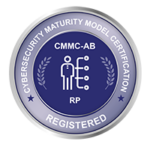Zero Trust. This security architecture concept, and naming mechanism, originated in 2010. It was introduced by a principal analyst at Forrester, John Kindervag. The following definition of Zero Trust, published by CSO, summarizes it as:
“…a security concept centered on the belief that organizations should not automatically trust anything inside or outside its perimeters and instead must verify anything and everything trying to connect to its systems before granting access.”
As such, implementing a Zero Trust architecture can appear to be an exceptionally daunting task, even for organizations that consider their cybersecurity methods to be mature. Just take the recent SolarWinds hack for example. It still might be easy to write Zero Trust off as overly cautious but consider this: cybercrime is estimated to cost $10.5 trillion by 2025.
Two factors that contribute to this astronomical figure are hackers’ increasingly sophisticated attack tactics and, of course, the human element of employees making mistakes. These honest, unintentional mistakes can, in the immediate, result in data and intellectual property or PII loss, damaged brand reputation, loss of revenue, and more. The secondary consequences are legal complications and broken customer trust.
Another staggering statistic is that last year one in three companies sustained a data breach due to misused or infiltrated mobile devices. Organizations often make the mistake of believing a device’s innate operating system (Android or iOS) will protect a device from malice. This simply isn’t true. In fact, there has been a noticeable increase in OS vulnerabilities over the last couple of years. As previously mentioned, human error and security failures go hand-in-hand, so instead of trying to ban employees from downloading certain apps in a BYOD work environment, look for a more formal solution.
Fortunately, new technologies have been introduced in the last decade to help make Zero Trust architecture not only possible, but simple, even for small to medium size businesses. For example, SyncDog’s Trusted Mobile Workspace offers a full end-to-end security platform that encrypts all your corporate data while on the device and in transit. This combined with its Mobile Threat Defense capability for malware detection and protection, phishing attacks and other corruption approaches, makes the mobile security solution a clear winner for companies moving towards Zero Trust. A lightweight operating system on top of devices’ actual operating system ensures neither productivity nor security is sacrificed.
Now you might be thinking, how do I manage (or supervise) these devices in addition to securing them? Well, SyncDog also offers an innovative Mobile Device Management (MDM) solution. Unlike other MDM solutions on the market, SyncDog’s comes with pre-existing organization hierarchy structures which Admins can quickly tailor to their needs. With other solutions, Admins often find themselves burning precious time creating custom configurations. Keeping in mind that users’ time is valuable, the SyncDog team has gone to great lengths to make the user interface easy to navigate despite the complexity of what the solution is capable of. An example of its granular capabilities is an Admins’ ability to define a policy for a specific individual without impacting the policies of others in a particular segment.
Together, the Trusted Mobile Workspace and MDM solutions provide the most comprehensive, integrated solution for mobile device management and security, making Zero Trust an achievable posture.
__
Learn more about SyncDog’s Secure.Systems, the first fully integrated end-to-end mobile security solution. Request a demo today.
